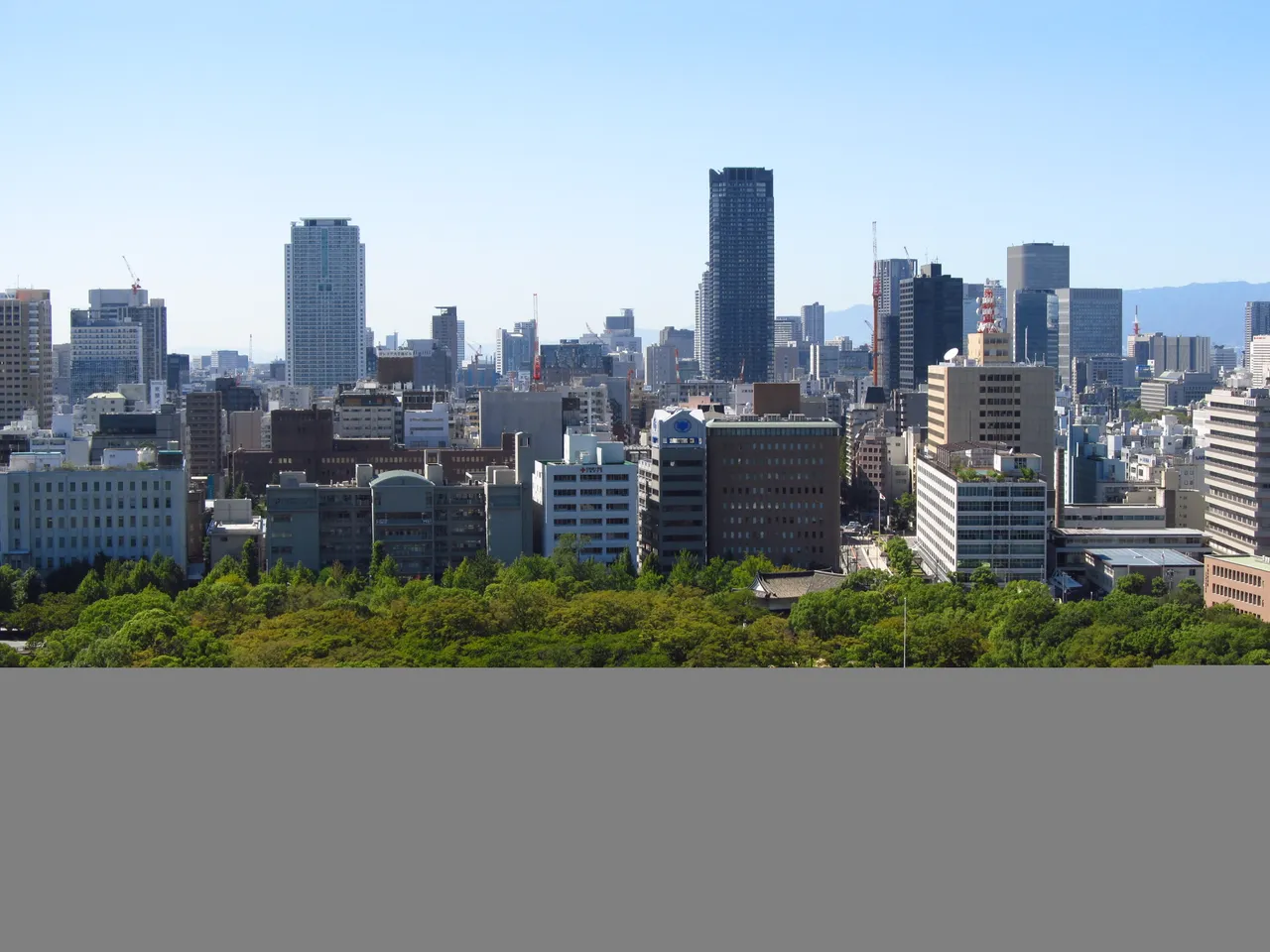
Let's go to Osaka again, the second largest city in Japan, and let's have a look around. I've been lucky enough to visit and look around this fascinating and vibrant megacity several times, and I'd love to visit again anytime.
Osaka is located in the heart of the Kansai region in the more southern part of the largest main island of Honshu and is somewhat considered Tokyo's eternal rival. But compared to the Japanese capital, Osaka can boast a much longer history; already 1,400 years ago, the city's predecessor, Namiwa, was the capital of Japan. Located in close proximity to the former imperial city of Kyoto and also to the port city of Kobe, the Keihanshin metropolitan region boasts a population of over 17 million. According to the Forbes ranking, after Tokyo Osaka itself is the second most expensive city in the world. Nevertheless, the city has established itself as a popular destination for both domestic and foreign tourists.
Of course, the city is connected to the national Shinkansen train system, and two airports also ensure that the city is easily accessible from all over the world. The city has a lot to offer for tourists and gourmets, especially the excellent Kansai cuisine is famous and popular all over the country and is copied and celebrated outside Osaka as well. Best examples are the extremely tasty okonomiyaki pancakes and also takoyaki, the small delicious octopus balls.
Many Japanese would say that Osaka is the somewhat rougher and wilder center of Japan, somewhat less conservative and thoughtful than the rest of the country. However, Osaka is ultimately a typical Japanese metropolis, not fundamentally different from other centers such as Tokyo, Nagoya or even Fukuoka, even if the city and its people try to create and preserve a little charm of their own. But as in the rest of the country, shopping and going out to eat and drink ranks high on the agenda of Osaka residents. In recent years, the city has gained a lot of popularity, especially among foreign visitors. The large number of restaurants and izakayas is a clear indicator for the physical well-being of the many visitors.
As mentioned earlier, Osaka is an ideal headquarters for travel in the Kansai region. The ancient capitals of Nara and Kyoto, and also Himeiji and Hiroshima are within easy reach and can be visited as a day trip. And if you wish, in the evening you can return to the temptations of Osaka and explore the city's varied nightlife.
Today we will go on a small tour through Osaka and look around a bit more. There are so many impressions to collect in this huge city that you usually don't know where to start.
But we are not in a hurry, quite the opposite....
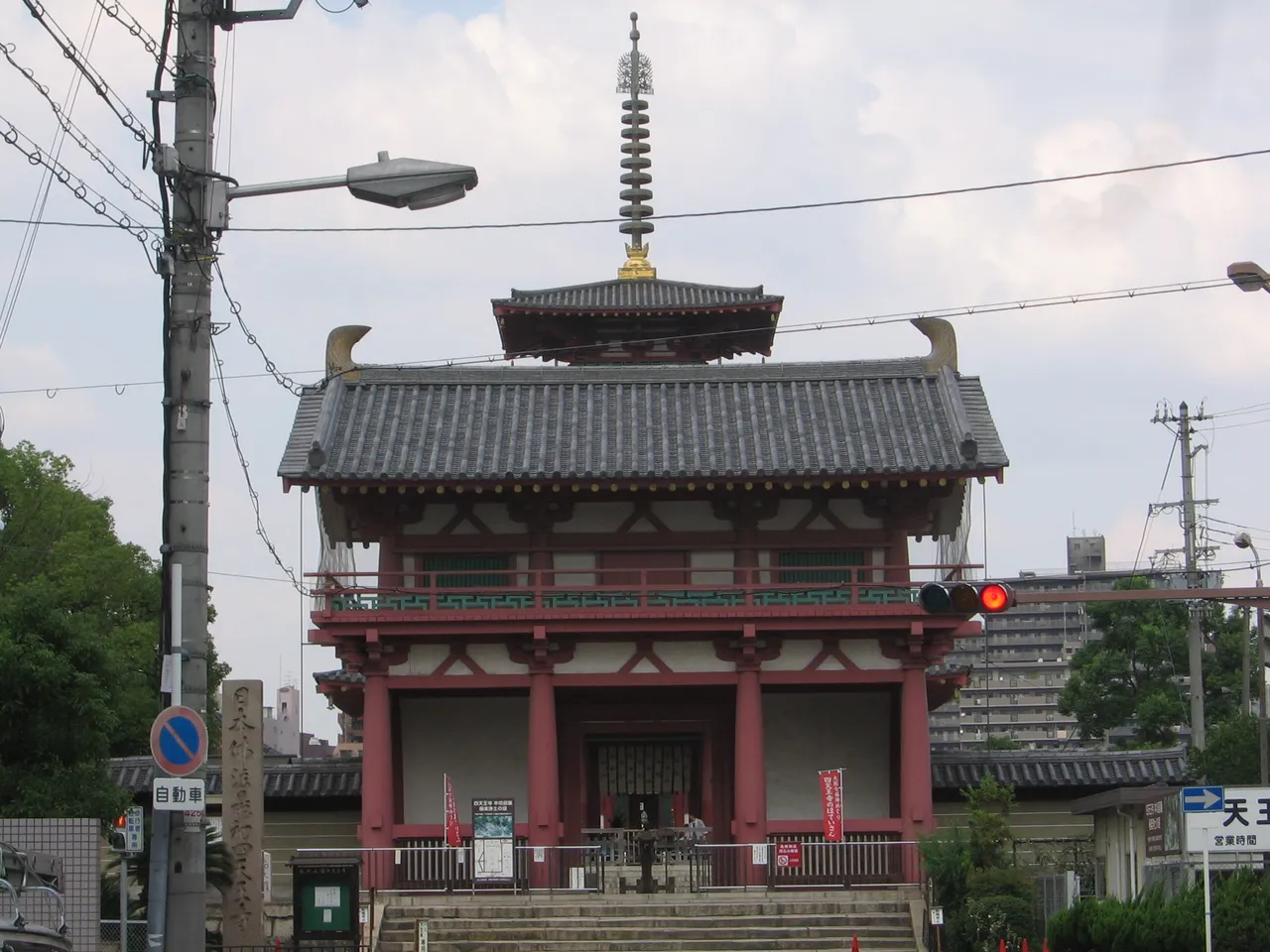
Let's start with a temple, the Shitennō-ji in the Tennō-ji district. The history of this temple complex goes back almost 1,500, to the time when Osaka was called Naniwa. The Shitennō-ji is now located in the middle of a residential area, and the various entrance gates are accessed directly from several major and minor streets.
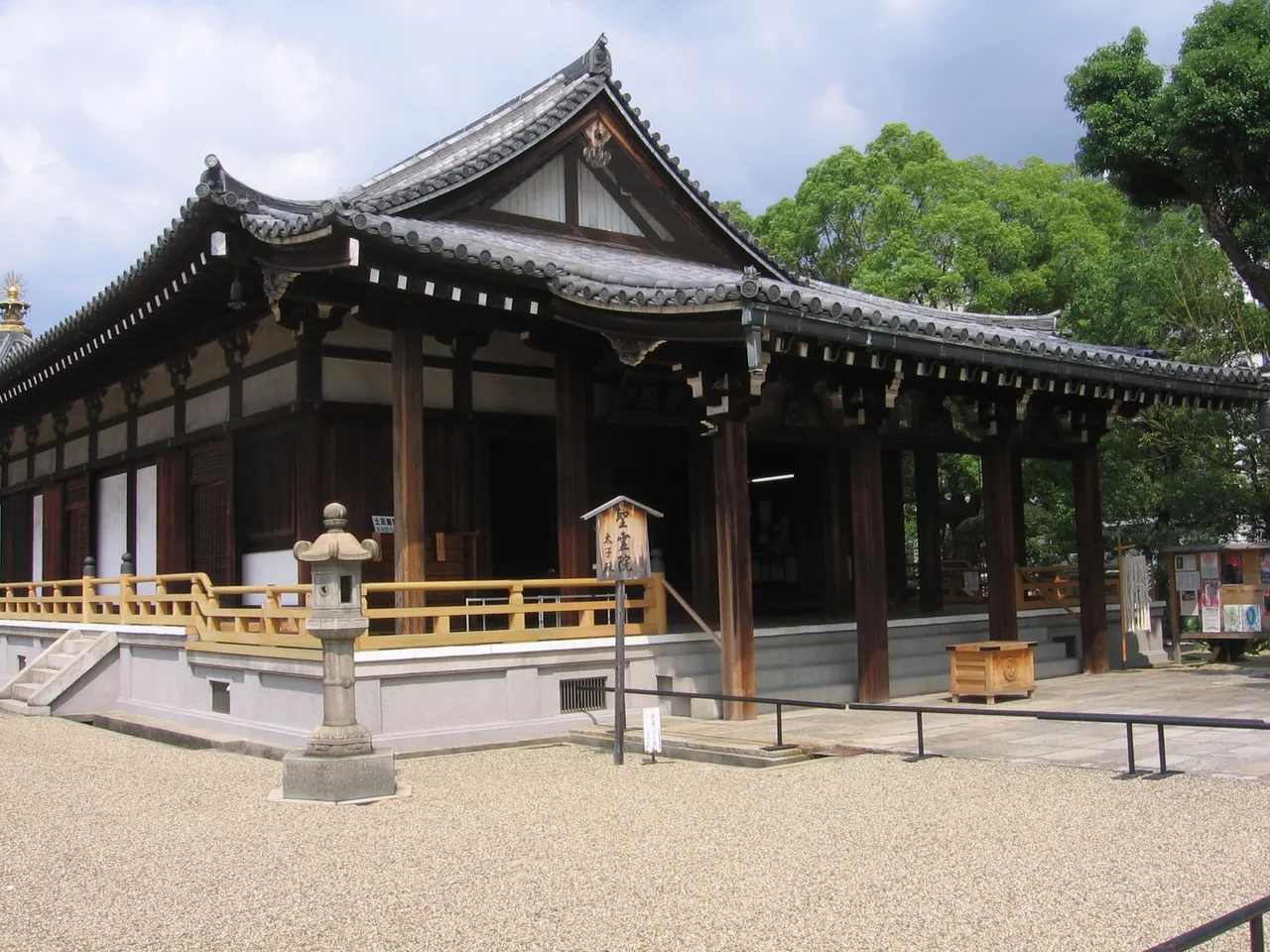
Like many historic structures in Japan, Shitennō-ji has been destroyed many times throughout history by fire, typhoons, and even civil war, but has always been rebuilt according to the old design. Originally a wooden construction, the temple was rebuilt for the last time in the 1960's, but this time peole were also using concrete, which in no way diminishes the charm of the temple today.
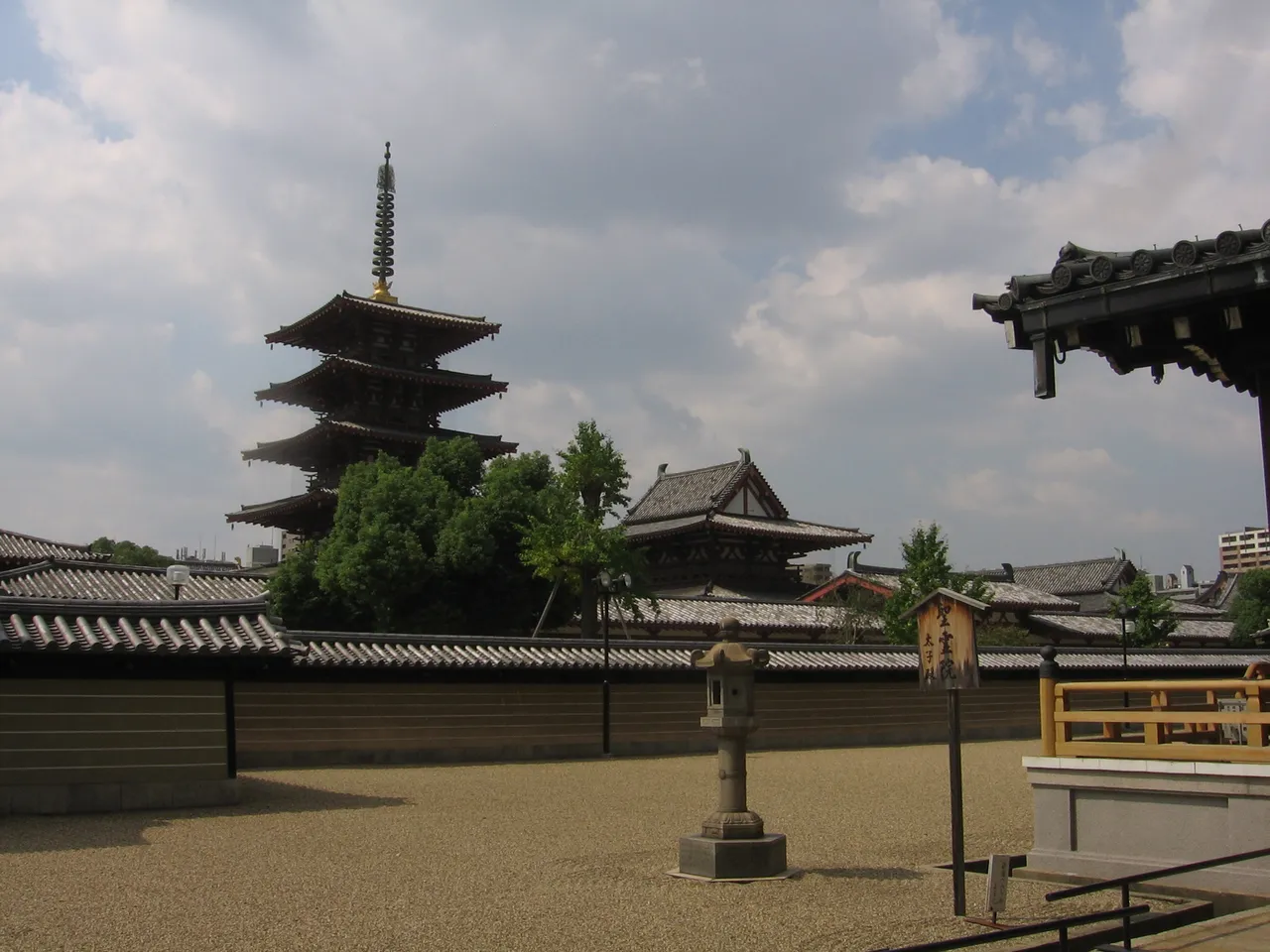
Inside the complex, you suddenly feel far away from all the hustle and bustle that is not so far away and you stop and calm down and relax not only physically but also mentally. The complex is equipped with an impressive 5-piece pagoda, as it probably belongs to a proper temple of this rank. A little bit of showing off seems to be part of Buddhism as well as in most other religions.
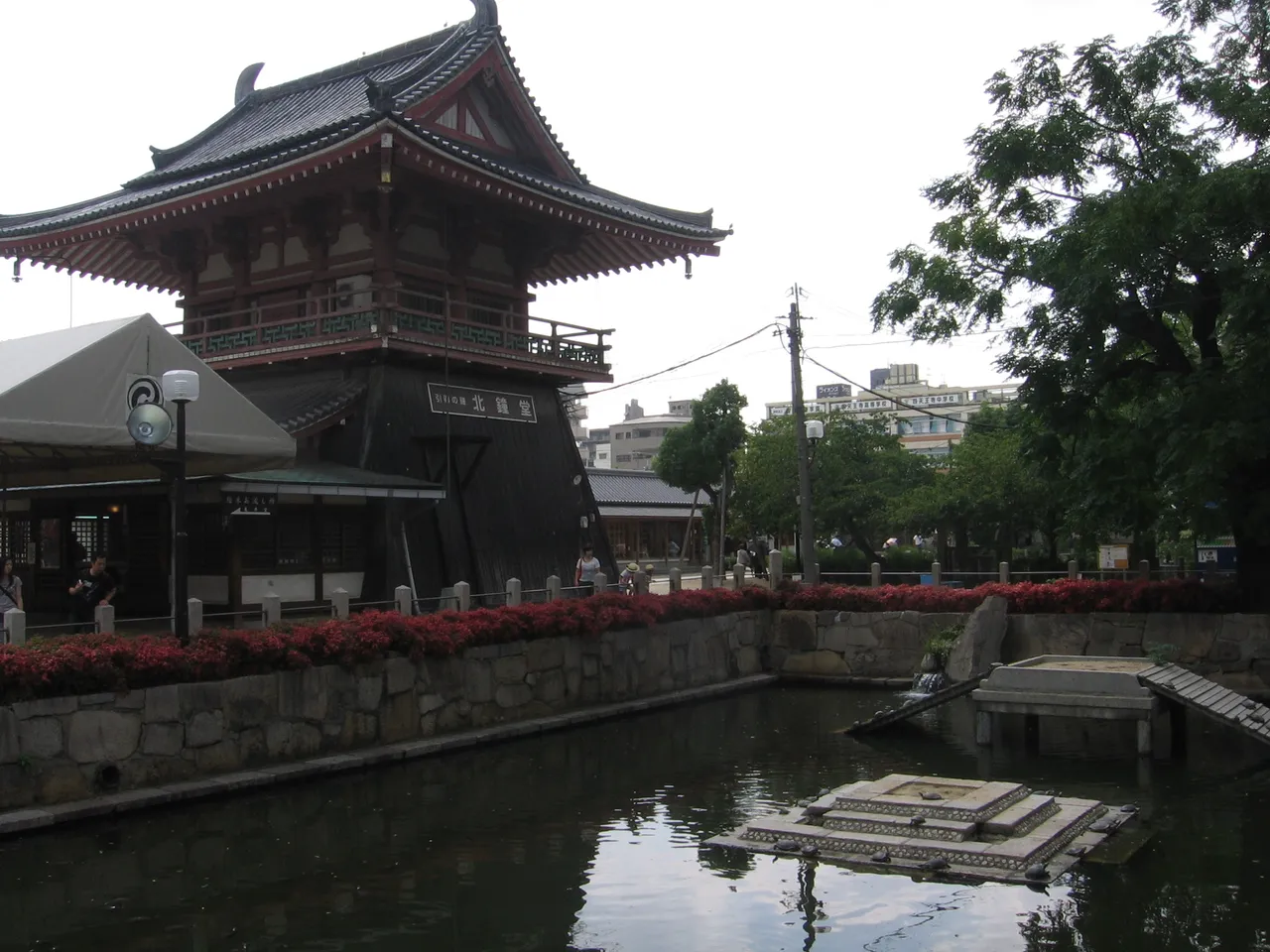
Shitenno-ji, with its inner and outer temple complex, is quite extensive and features several interesting buildings and also gardens, some of which survived World War 2 and are now registered as important Japanese cultural properties.

Temples in Japan often exert a very special charm on me, and I enjoy walking through these places and perceiving the so special atmosphere and keeping it in me. This alternation of tradition and modernity is one of the reasons why I enjoy traveling in this country so much.
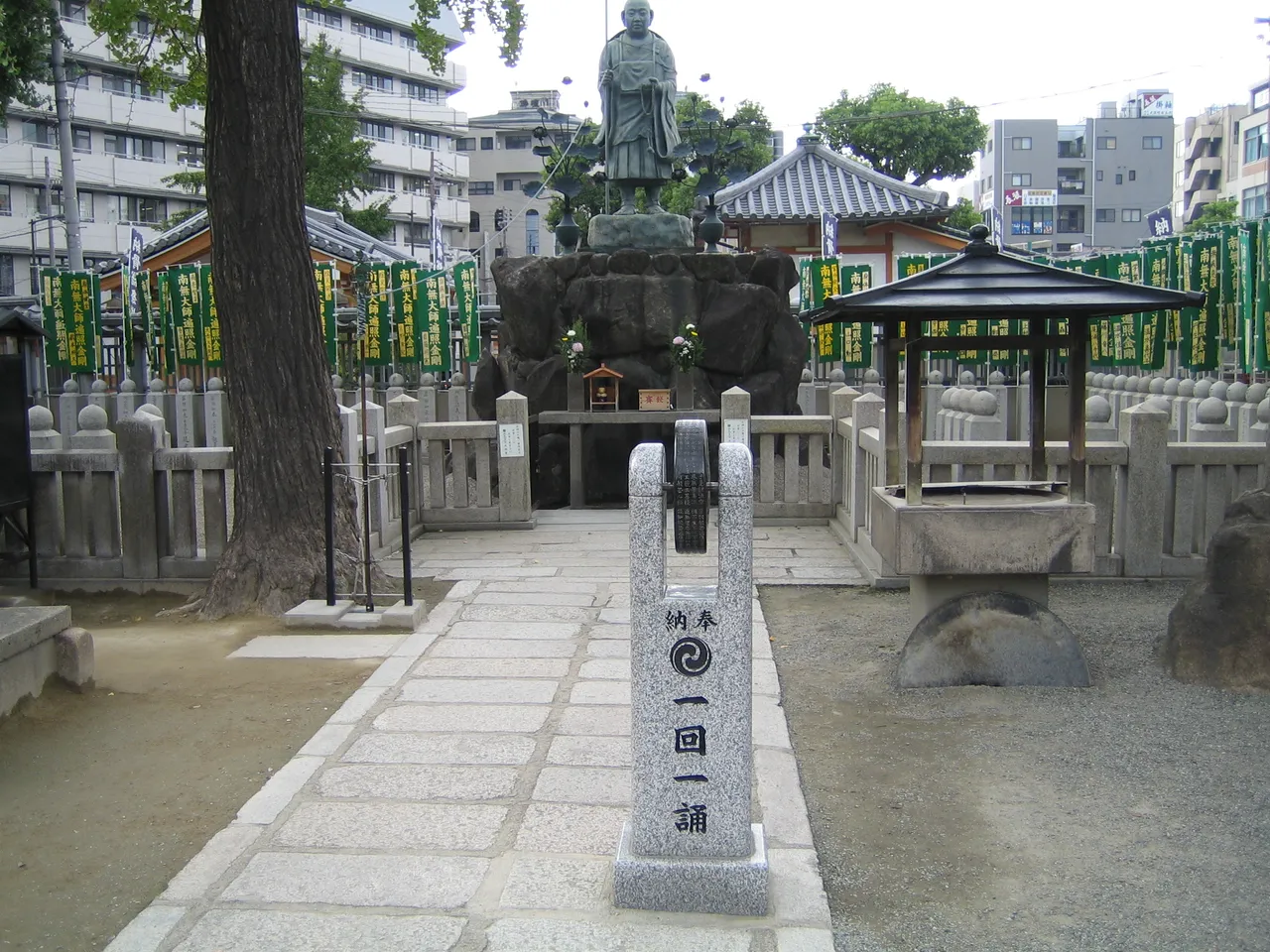
In this picture, it is again easy to see how the temples often blend in well with today's cityscape. The surrounding residential buildings extend right up to the complex, especially in Japan land and living space is very precious and every available square meter is built on and used.
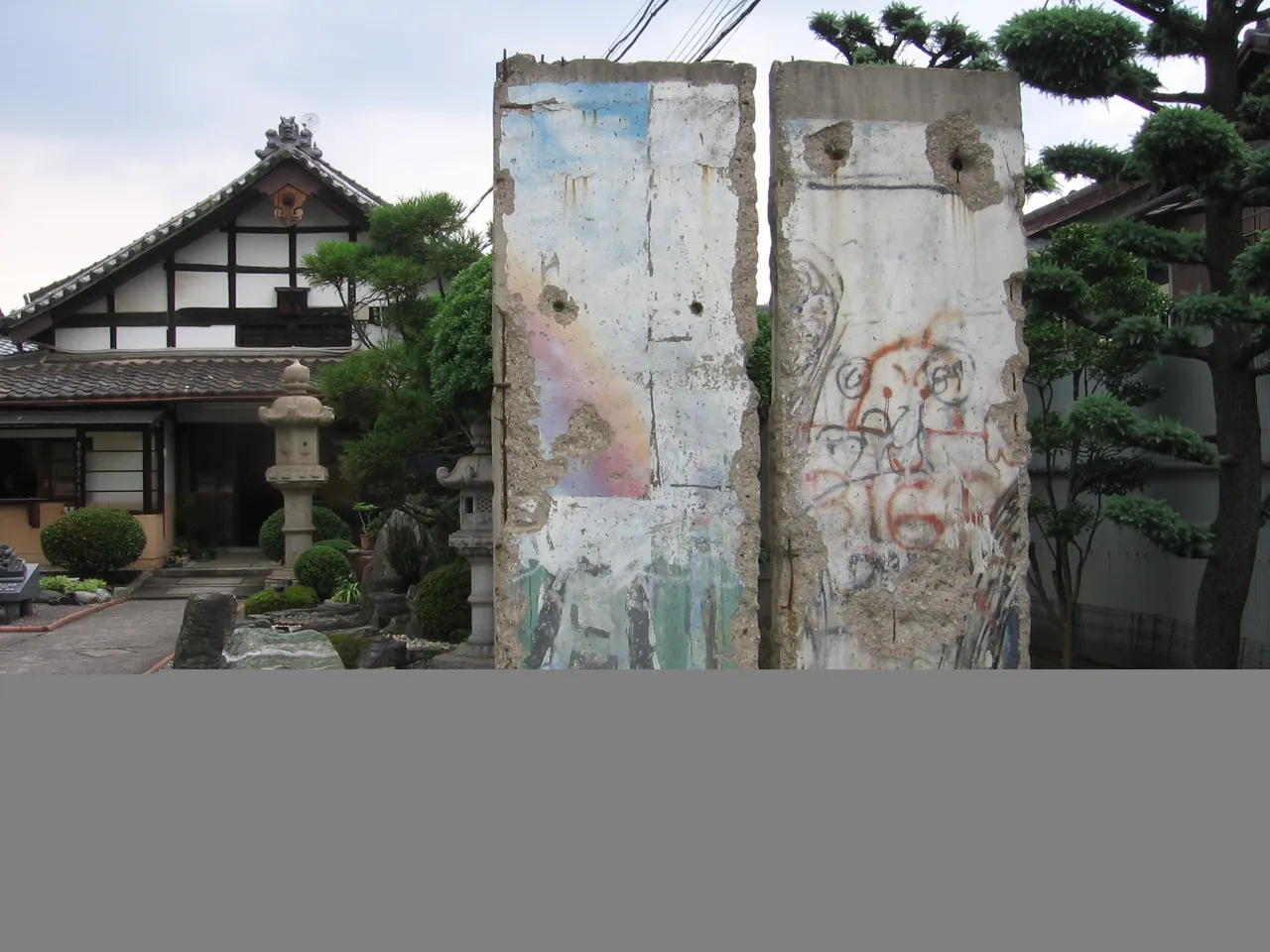
Near Shitenno-ji there is another temple, which came up with a little surprise. In the Toukoku-ji complex you can find two original parts of the former Berlin Wall, which was quite an impressive sight for me, and which I didn't expect to find here.
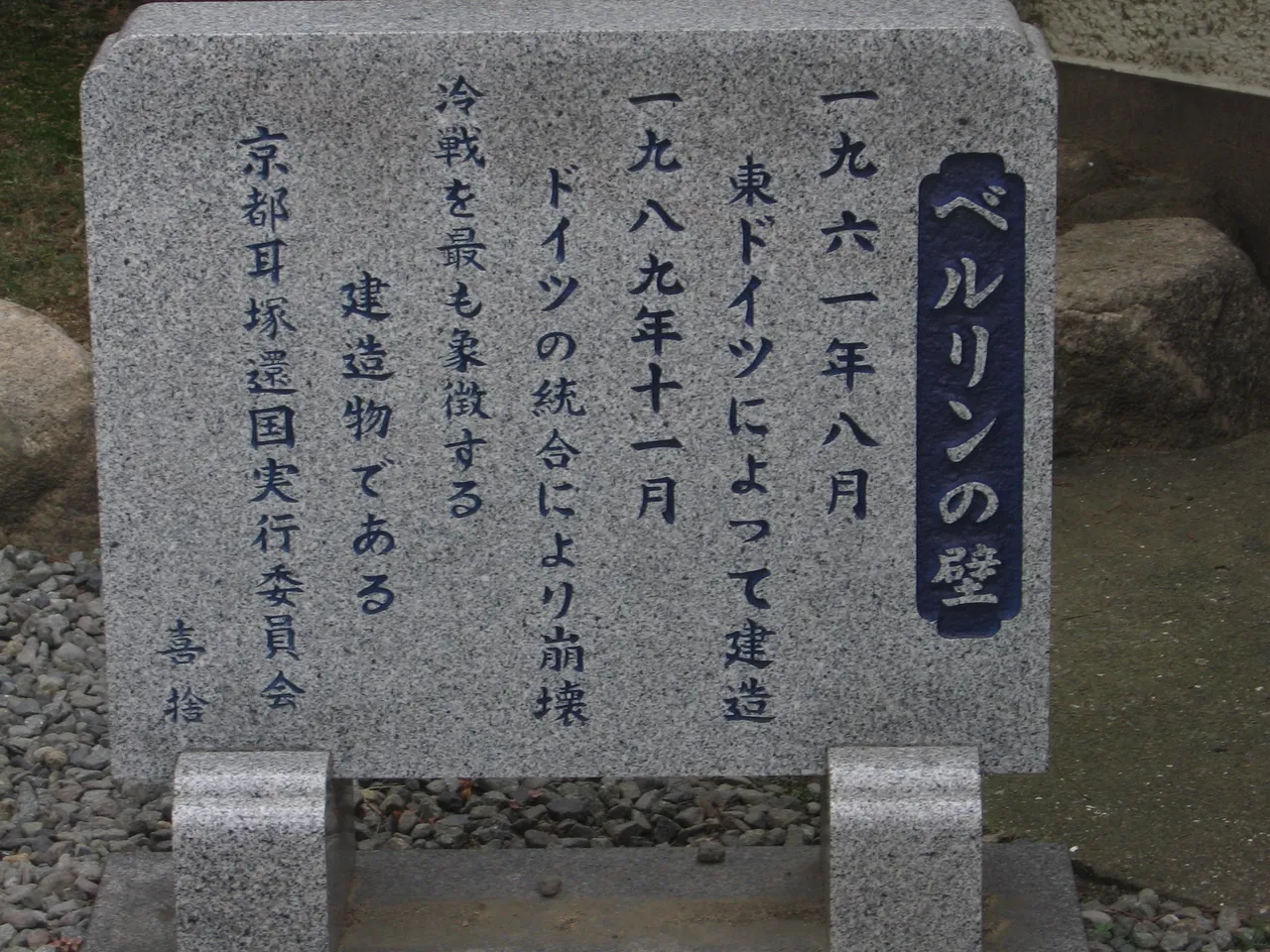
The inscription on this granite plate is the following:
"ベルリンの壁一九六一年八月東ドイツによって建造一九八九年十一月ドイツの統合にょり前壊.
冷戦を最を最も象徴する建造物である_
京都耳坂還国夫行委員会."
Translated this would be
"The Berlin Wall was built by the East Germans in August 1961 and destroyed with the reunification of Germany in November 1989."
The most symbolic structure of the Cold War.
The Kyoto Migrants Committee"
At that moment, it was time for me to reflect and understand that if history had taken a different road, I would not have been able to stand in that place that day. Only because of the fall of the Berlin Wall, had I been able to visit and tour other parts of the world, and I was grateful that I had been given this great opportunity.
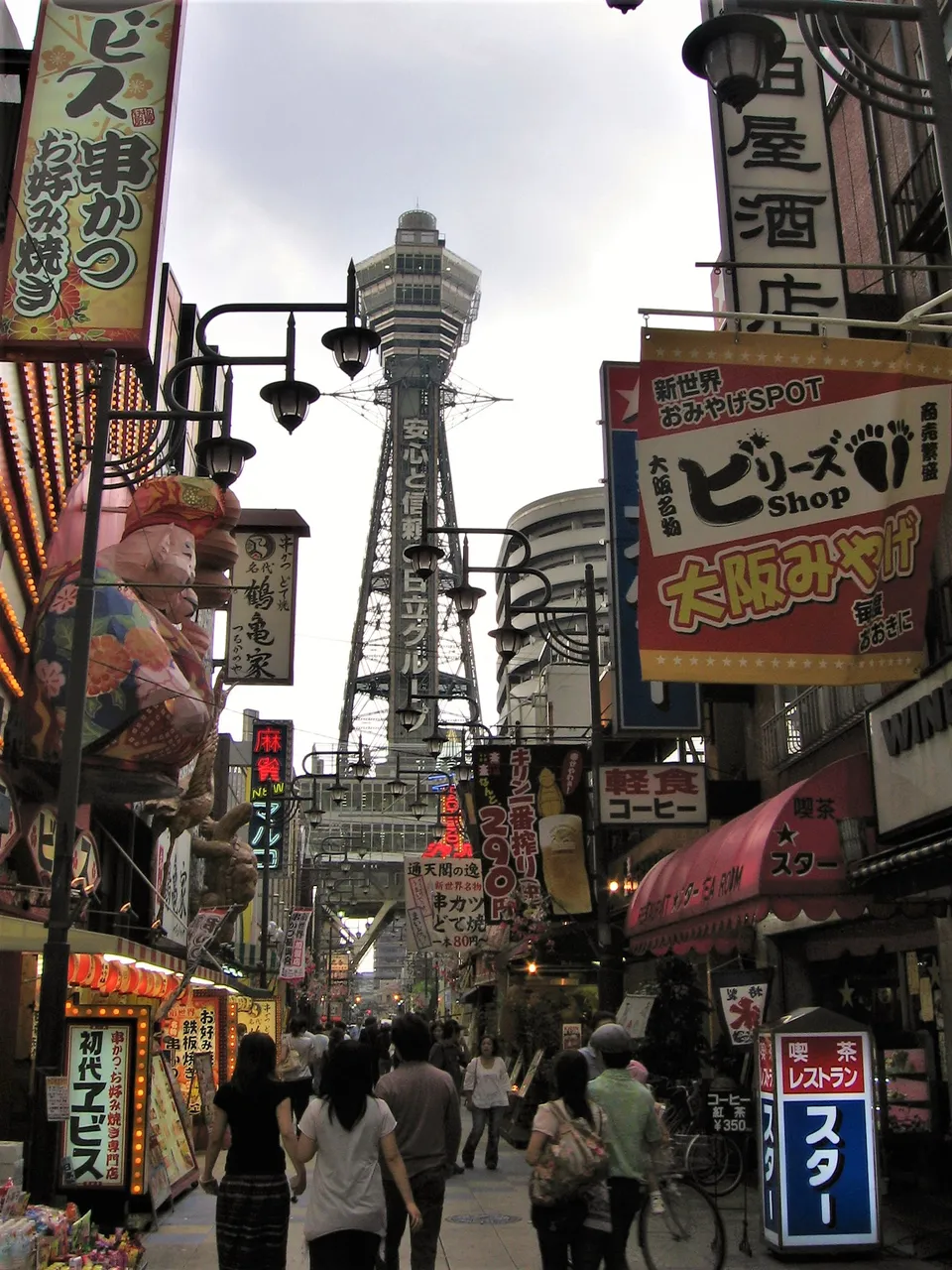
At some places Osaka's modernity can feel almost traditional, as for example in the Shinsekai district, which is dominated by the 103 meter high transmission and observation tower Tsuutenkaku. This district, located in the south of the city, was built over 100 years ago and took New York and Paris as architectural and urban design models.
Shisekai has a negative image as Osaka's most dangerous neighborhood, but it also has a turbulent history and a unique identity. In the early 20th century, the district flourished as a local tourist attraction that showcased the city's modern image. After World War II, the neighborhood served as entertainment district for workers rebuilding Osaka. Until the 1990's, the neighborhood struggled with increased crime and today there is a fairly high concentration of homeless people comapred to the rest of Japan. You can also find many cheap restaurants and stores and also cinemas and gaming centers, but even today many people claim that they would be afraid to set foot in this area.
But don't let that stop you from wandering through Shinsekai with and open mind, open eyes and an open heart.
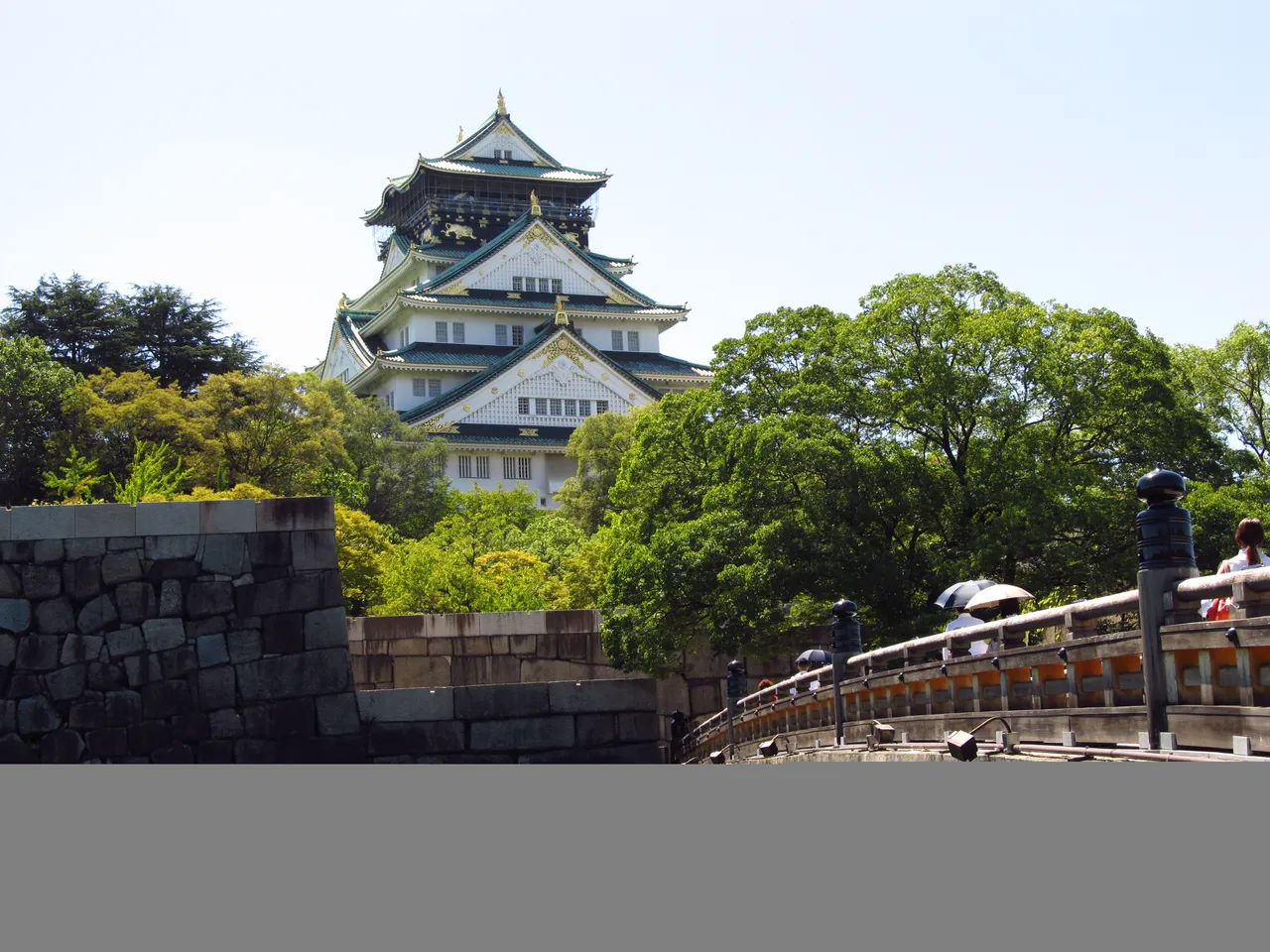
Recently I discovered my passion for Japanese castles, so today I want to show you another image of Osaka-jo, the imposing castle in the heart of the city. I've been to the park surrounding the castle several times and twice I've even been inside and to the top of the observation deck.
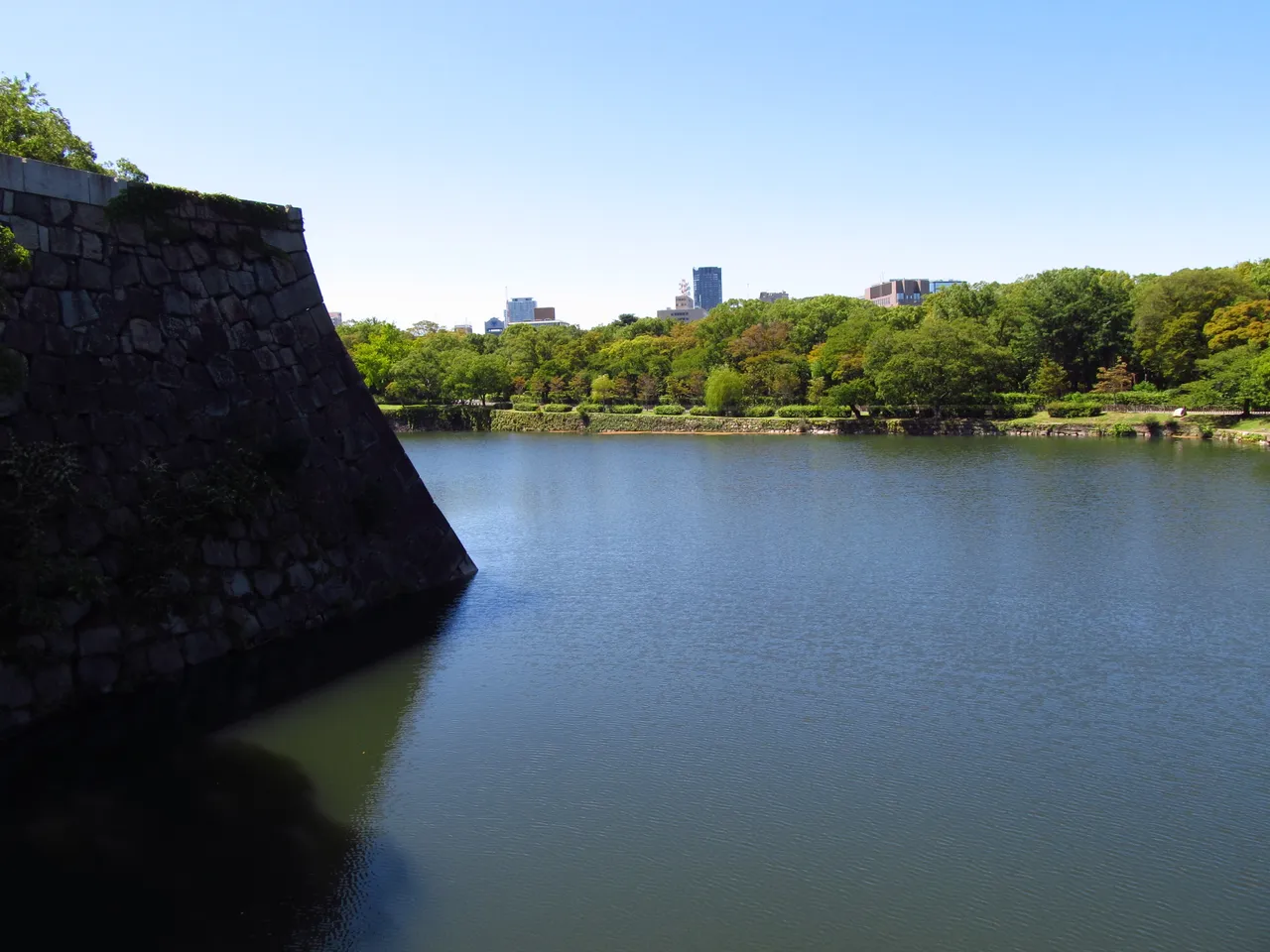
The foundations and also the outer walls are mostly preserved in their original state and still look quite impressive today. I really like to walk next to or even on top of these imposing walls, transporting me back a bit to an old, long-ago era. Today, these walls still have something solid and enduring, and exert a very special, irresistible charm on me.
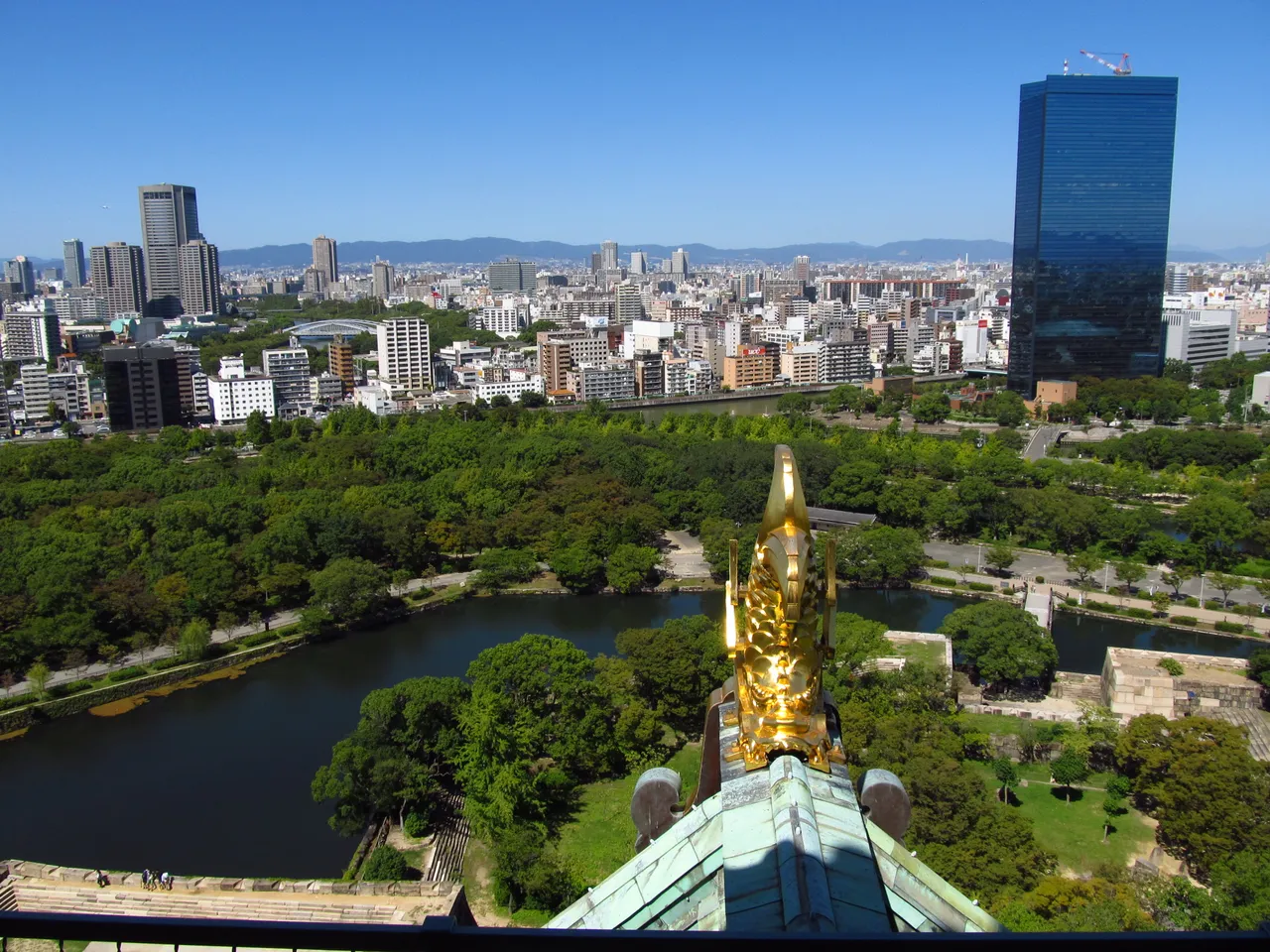
When the weather is good, there is a magnificent view from the very top of the castle, and on that day we simply timed it right. We arrived just after a typhoon and the sky was wonderfully clear and blue and we could see all the way across the city to the mountains. From the old and traditional Osaka across the modern world. Just beautiful.
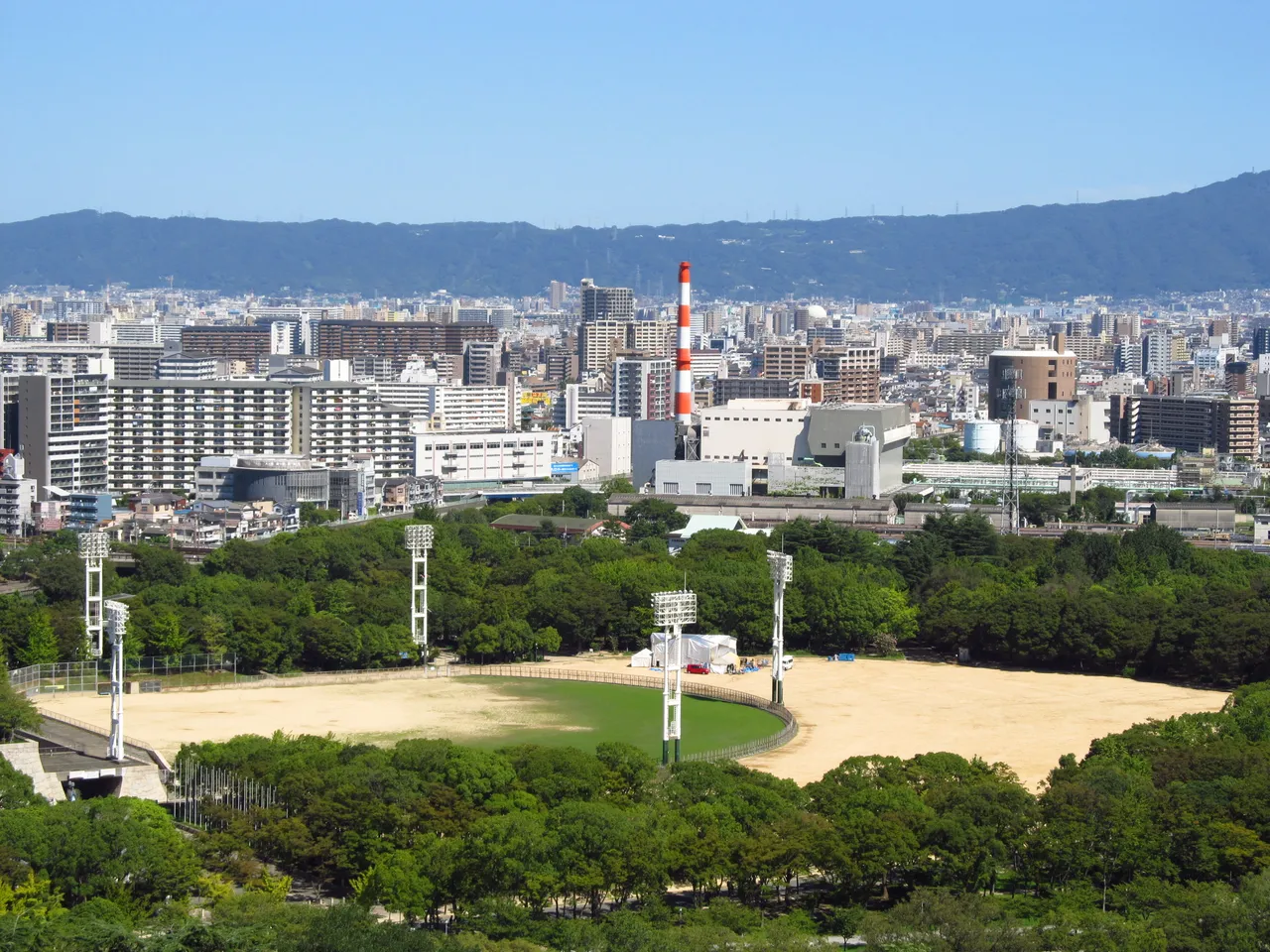
If you have a good eye or a good lens, from up here you can see a lot of details of the city, something you can hardly do from below. The city seems gigantic and majestic even from above, and I always start thinking about how many stories and secrets are still hiding down there.
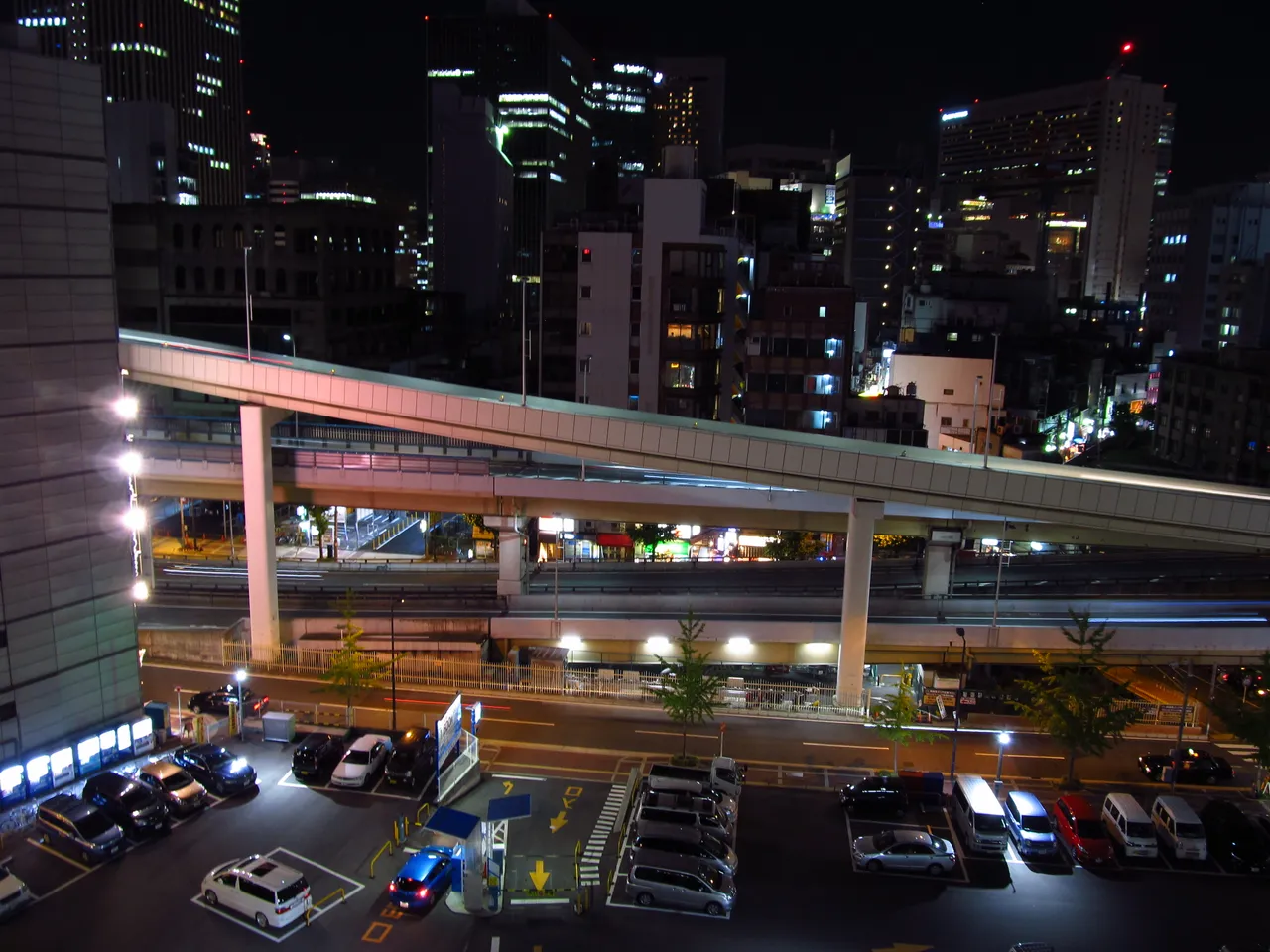
And even at night, Osaka is really something, and starts to show a different side. In this picture you can see some of the elevated roads that cross the city in several places. Very impressive for the observer, but I can imagine that the residents here have a very different opinion about it. It doesn't only buzz and rattle at the very bottom, but also near their own windows and balconies. Large cities always have a lot of advantages but also a lot of disadvantages.
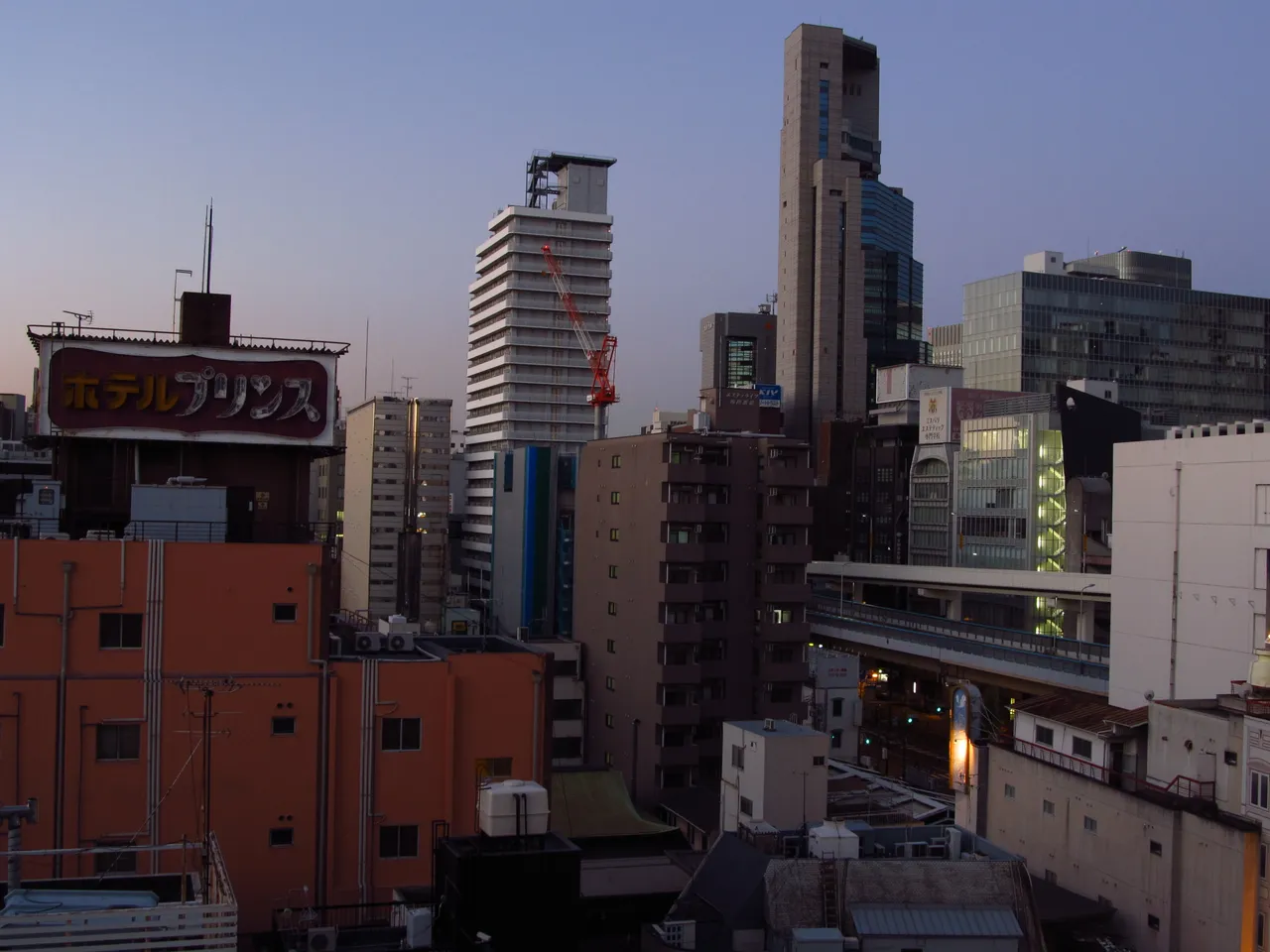
Fortunately, metropolises also have a charming side, in which they often present themselves shortly after sunset. In these very special and usually quiet light conditions, you quickly understand what fascinates so many people about big cities. Osaka is no exception, as this concret jungle can also develop an irresistible attraction that people simply have to surrender to.
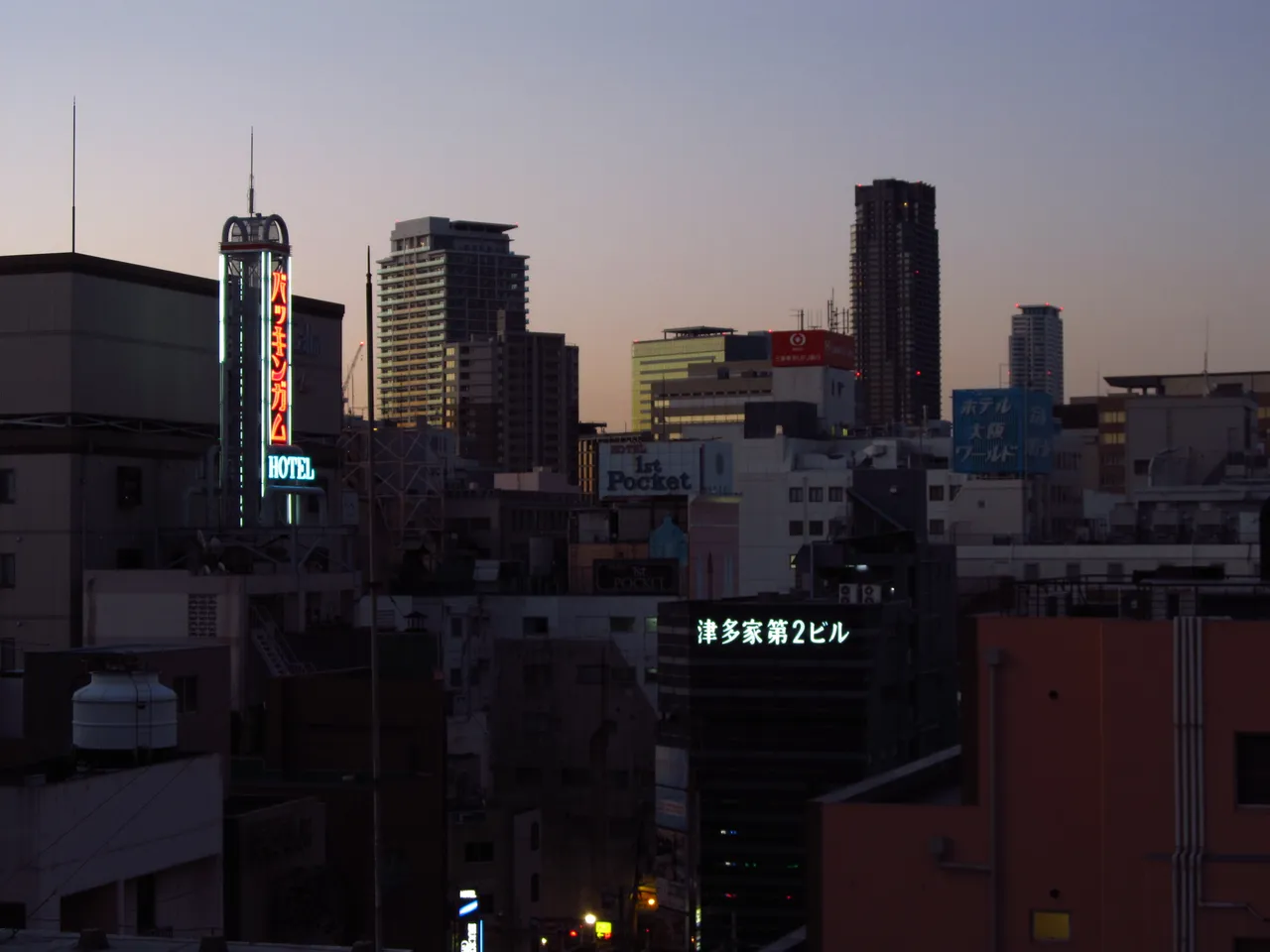
Depending on the place and location, at night the city disappears into darkness or plunges into a colorful and flickering glow that attracts people like moths.I love to look over the roofs of the city, and in the process I quickly start to dream of all the things I have already experienced and of what is still waiting for me there.
And in this world there is still a lot waiting for us, we just have to keep our eyes and our hearts open and be ready to dive into the life that is reinventing itself over and over again.
I wish you all a wonderful day, I'll be back soon with more impressions of this great city, which I hope to visit again one day.
またね matane
[//]:# (!pinmapple 34.654522 lat 135.516257 long An extremely charming side of Osaka d3scr)
